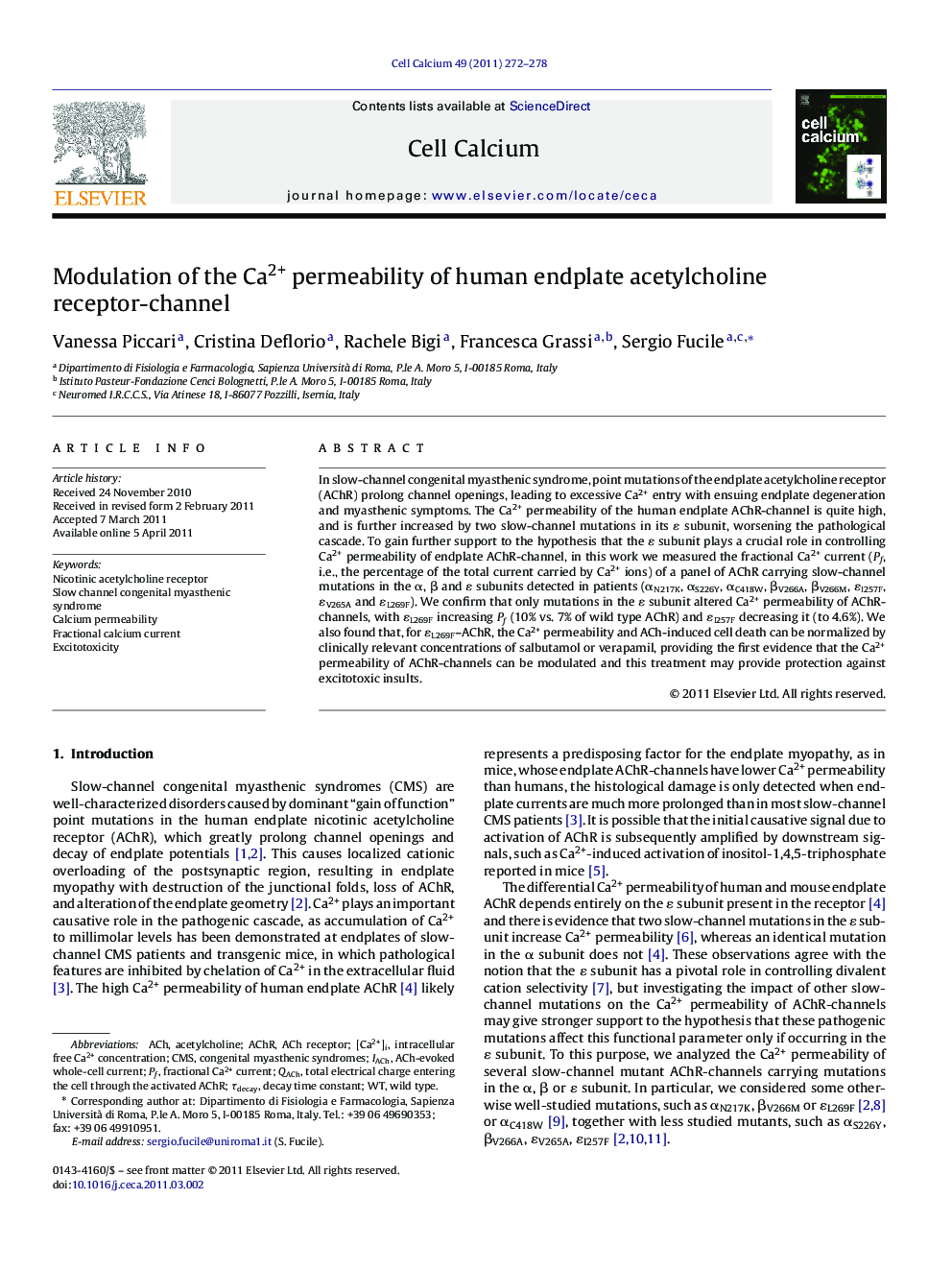| Article ID | Journal | Published Year | Pages | File Type |
|---|---|---|---|---|
| 10926398 | Cell Calcium | 2011 | 7 Pages |
Abstract
In slow-channel congenital myasthenic syndrome, point mutations of the endplate acetylcholine receptor (AChR) prolong channel openings, leading to excessive Ca2+ entry with ensuing endplate degeneration and myasthenic symptoms. The Ca2+ permeability of the human endplate AChR-channel is quite high, and is further increased by two slow-channel mutations in its É subunit, worsening the pathological cascade. To gain further support to the hypothesis that the É subunit plays a crucial role in controlling Ca2+ permeability of endplate AChR-channel, in this work we measured the fractional Ca2+ current (Pf, i.e., the percentage of the total current carried by Ca2+ ions) of a panel of AChR carrying slow-channel mutations in the α, β and É subunits detected in patients (αN217K, αS226Y, αC418W, βV266A, βV266M, ÉI257F, ÉV265A and ÉL269F). We confirm that only mutations in the É subunit altered Ca2+ permeability of AChR-channels, with ÉL269F increasing Pf (10% vs. 7% of wild type AChR) and ÉI257F decreasing it (to 4.6%). We also found that, for ÉL269F-AChR, the Ca2+ permeability and ACh-induced cell death can be normalized by clinically relevant concentrations of salbutamol or verapamil, providing the first evidence that the Ca2+ permeability of AChR-channels can be modulated and this treatment may provide protection against excitotoxic insults.
Keywords
Related Topics
Life Sciences
Biochemistry, Genetics and Molecular Biology
Cell Biology
Authors
Vanessa Piccari, Cristina Deflorio, Rachele Bigi, Francesca Grassi, Sergio Fucile,
